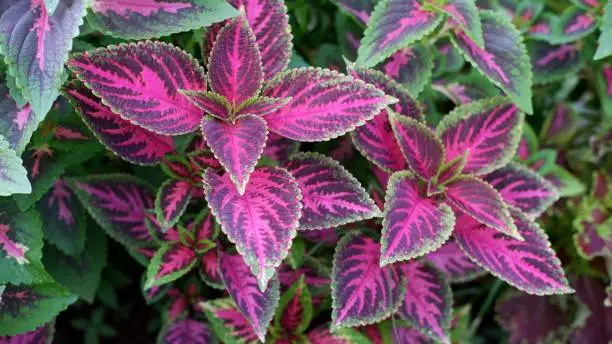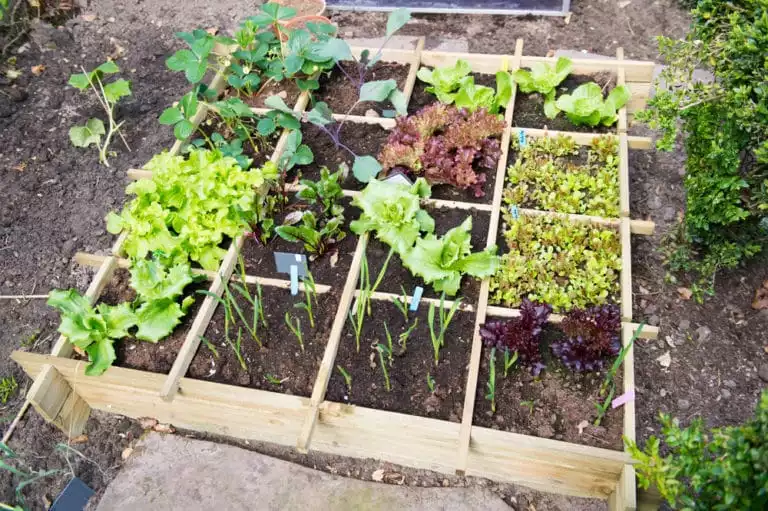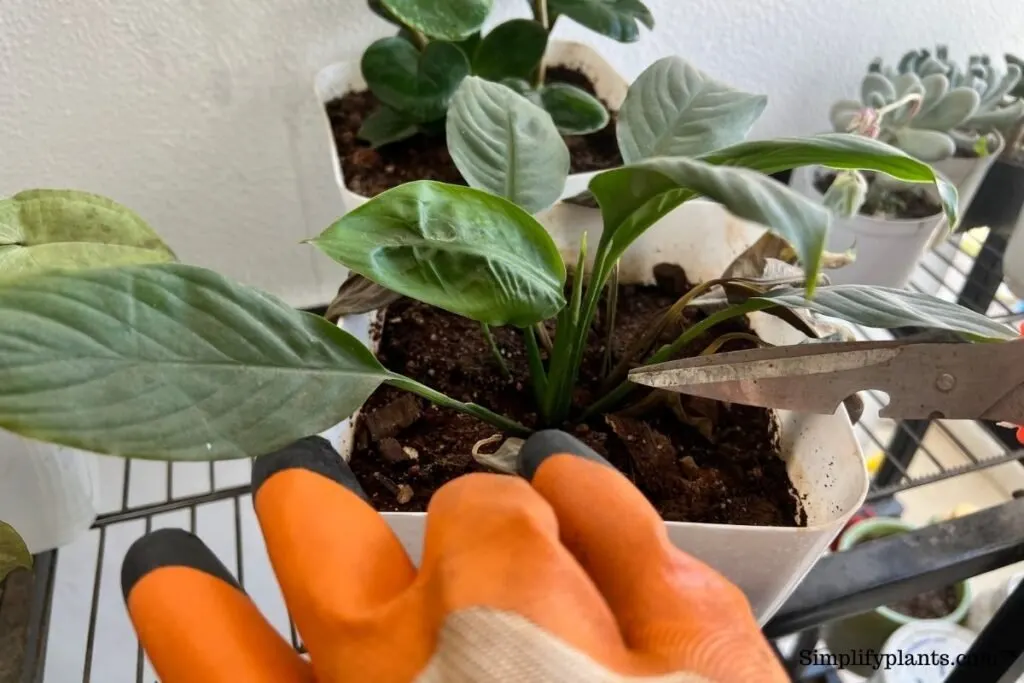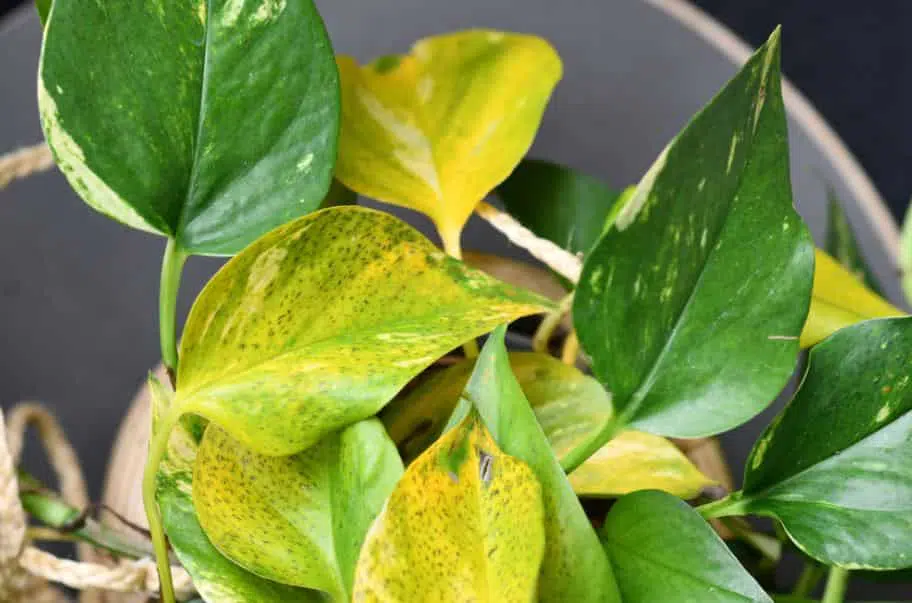Coleus plants are vibrant and can add a lot of color to your garden. Also called flame nettles, these plants are easy to grow if you get their water and sunlight requirements right. But first, is coleus a sun or shade plant?
Coleus plants prefer full morning sun and shade in the afternoon. Some varieties can tolerate full sun all day in areas with high humidity. In fairly dry climates, coleus plants can still grow bright foliage under partial shade but when grown indoors a bright grow light is needed to produce colorful foliage.
Generally, coleus plants do well in warmth and can grow into brightly colored foliage annuals in gardens that are fully or partially shaded. Some varieties like the full sun while others like the partial sun. I’ve listed them below, but first, here’s the coleus plant profile:
| Names | Coleus; Plectranthus scutellarioides; |
| Sun requirements | Partial shade to full shade. |
| Soil pH | 6.0 to 7.0 |
| Water requirements | Once every 2-3 days (indoors); 2 times per day in hot weather outdoors. |
| Soil type | Well-draining soil. |
| Size | 6 inches to 3.5 feet; 1 to 3 feet wide (depending on the type). |
Does coleus like sun or shade?

Coleus plants like a mix of sun and shade. The morning sun is the most important for proper growth and development, with the afternoon shade being preferred. Seeded varieties of coleus like shade while most of the modern vegetatively propagated varieties grow like full sun exposure.
Sunlight tolerance is also a factor in the general climate in these plants:
- In hot and dry climates, all types of coleus will need some shade.
- In cool climates, coleus plants will need more exposure to the sun for healthy growth.
Some hybrid varieties of coleus flowers are hardy and can withstand full sun from morning to late afternoon without showing any signs of overexposure.
Coleus plant sunlight requirements
Most coleus plants require about 6 hours of sunlight in the morning hours with shade being preferred all afternoon. However, this depends on the variety you’re growing in your garden and flowerbeds. Some modern varieties of coleus can tolerate full sun exposure all day long especially when growing in humid climates.
Before growing coleus in your yard or indoors, check the label to see if the variety is adaptable to the amount of sun you’ll be exposing the plant to.
Keep in mind that for you to get the best coloration, an adequate amount of sun exposure will be required by the plant.
David Graper, a horticultural specialist with the San Diego State University Extension remarks that “(Coleus) plants with darker colored foliage seem to do better in sunnier locations.”
Therefore, if your garden receives full sun all day, you might want to choose the cultivars of coleus with darker colors for the best survival and color display.
List of coleus varieties for full sun
Some varieties of coleus do well in full sun than others. Before you get some seeds to plant in your garden or indoors, you want to make sure you get the right cultivar that is good for full sun.
Here are some coleus varieties that are good for the full sun:
- Wasabi coleus
- ColorBlaze coleus
- Redhead
- Coleosaurus
- Henna
- Red Carpet
- Box Office Bronze
- Blonde Bombshell
These varieties are sun tolerant and will perform well when grown in sunny locations.
Coleus varieties for shade
For areas that are shady or partially sunny, you can choose coleus varieties that are well suited for low light conditions. Some of the coleus types that are best suited for part shade include:
- Honey Crisp
- Cranberry Bog
- Stained Glassworks Molten Lava
- Stained Glassworks Eruption.
Some varieties such as Inferno coleus are best suited for both sun and shade, meaning you can plant them in areas with a mix of sun and shade, or either. Campfire also performs well in sun and shade conditions.
Can you use grow lights for coleus indoors?
Coleus flowers are fairly easy to grow indoors in pots. All you need is a good LED grow light to place them under. Since the plants like warmth, you want to get a grow light that produces a little amount of warmth in addition to full-spectrum, sun-like light.
You can supplement the grow light with sunlight by placing the pot near the window in your house that receives bright morning sunlight. For the afternoon, try to move the plant to spots that receive indirect light, or just place it under a low-intensity grow light.
RELATED: WHAT IS INDIRECT LIGHT FOR PLANTS
Why is my coleus losing color?
Coleus plants will do well in dappled sun and will start losing color when exposed to too much sun. In short, they do not like too much sun. Overexposure will start to show signs such as loss of color, with the older leaves fading to a noticeable extent.
If you want to keep coleus plants looking vibrant when in full sun, pinch off the old foliage to allow new, more colorful leaves to emerge. You might want to correct the sun exposure to meet the optimum sunlight requirements to prevent the loss of color.
Take note that varieties of coleus that are suited for full sun may become vividly bright and colorful when exposed to full sun as opposed to when they’re in shaded areas.
References:
[01] University of Maryland Extension: Sun Coleus
[2] David Graper, San Diego State University Extension: Growing Coleus –Sun Cultivars and Requirements
[3] University of Georgia College of Agricultural and Environmental Sciences: Inferno’ coleus has stunning orange foliage of perfection



